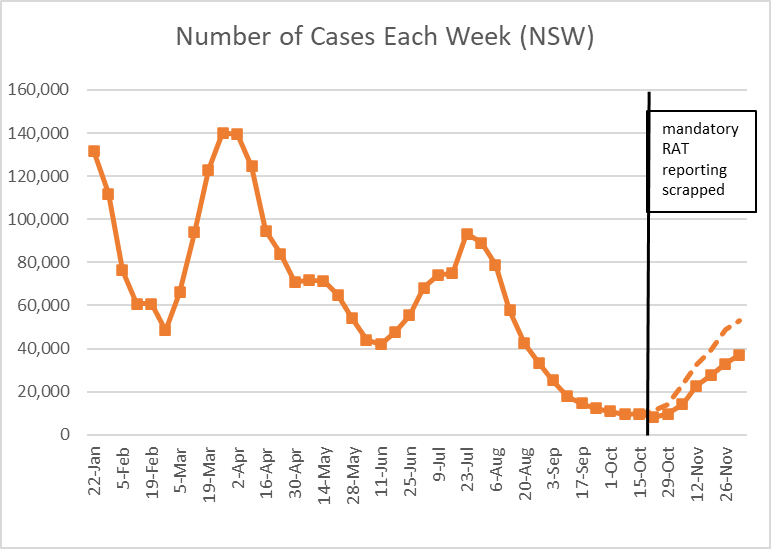
NSW Health has released their epi report for the week ending 14 Jan. As I've been away for a while, this thread covers the last six weeks or so.
#Covid19Aus #Covid19NSW
You can find the full report here...
health.nsw.gov.au/Infectious/cov…
#Covid19Aus #Covid19NSW
You can find the full report here...
health.nsw.gov.au/Infectious/cov…
Note that for the two weeks ending 31 Dec, NSW Health reported a lot of metrics for these two weeks combined. So I have needed to estimate the split between the two weeks in some places.
In the most recent wave, cases grew quite steadily up until around 10 Dec, then we had a dramatic decline (-40%) in the week ending 31 Dec (a week that includes Christmas day and boxing day). The last two weeks have seen 30% reductions in cases. 

PCR vs RAT cases: removing mandatory reporting of RATS resulted in an undercount of RATs relative to the previous wave.
The requirement for a doctor referral to get a PCR test since 1 Jan has reduced the number of PCR cases. RAT and PCR cases are now similar again.
The requirement for a doctor referral to get a PCR test since 1 Jan has reduced the number of PCR cases. RAT and PCR cases are now similar again.

It is very difficult/impossible to really understand the trend in case numbers in the last few weeks given the impact of Christmas, plus changes to access for PCR tests.
Healthcare workers furloughed (an early indicator of case trends) is on the decline, but the shape doesnt have the same big drop in the w/e 31 Dec as the cases graph.
This indicates prevalence is now similar to w/e 14 Nov, whereas the cases graph would indicate 29 Oct.
This indicates prevalence is now similar to w/e 14 Nov, whereas the cases graph would indicate 29 Oct.

Cases by age band: loads more recorded cases in 60+ age band in this wave. And a lot less cases recorded in kids. 

The epi report no longer reports on how many people are in hospital.
Wrapping up 2022, this graph shows a breakdown of hospital/ICU admissions by age band since 22 May (when we have data). 20% of hospital admissions were in those aged under 40.
This age mix has been pretty consistent over the year.
This age mix has been pretty consistent over the year.

And here is the age mix of deaths from 22 May to 31 Dec.
Of the 4,622 covid deaths in the year, 29 were in people aged under 40.
Of the 4,622 covid deaths in the year, 29 were in people aged under 40.

Our homegrown BR.2 sublineage has been dominant over the last six weeks or so.
XBF has had some recent growth.
ends/
XBF has had some recent growth.
ends/

A correction to this thread: PCR testing in NSW is still available without a GP referral. So it is unclear why PCR case numbers have dropped so much. Yes, there would have been a real reduction in cases, but the quantum appears too high…
Maybe people were like me and thought it had been implemented in NSW, so aren’t seeking PCR tests?
This should say 11%, not 13%. I incorrectly quoted last week’s positivity rate.
• • •
Missing some Tweet in this thread? You can try to
force a refresh






















